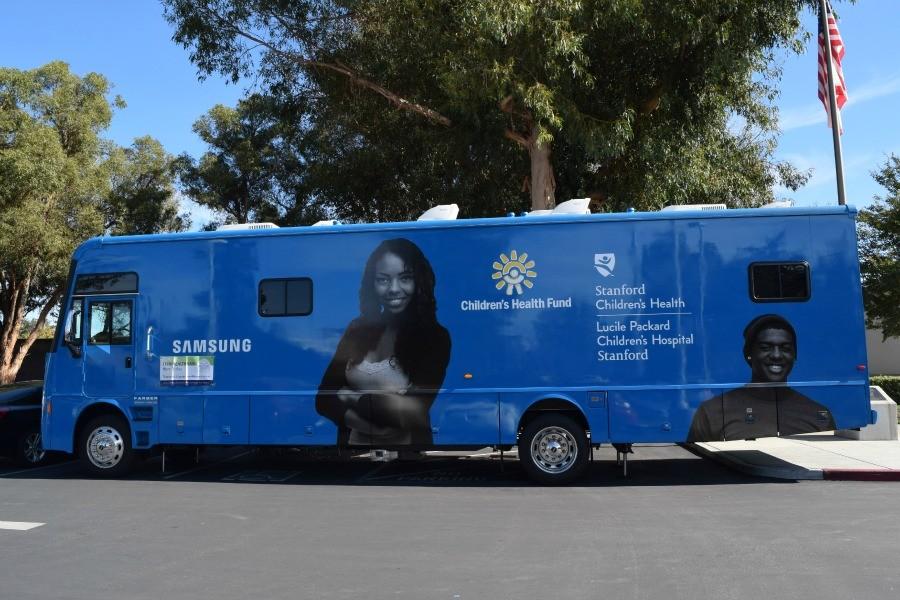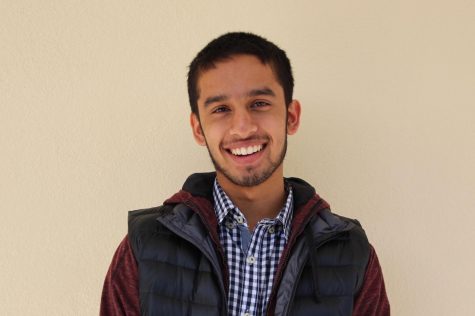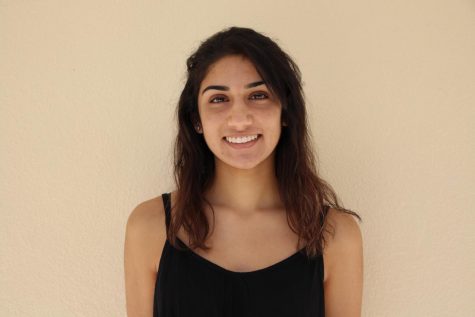Health Van Brings Needed Services
The Teen Health Van parks by the side of a road. The van, which parks at the school one Thursday each month, is a valuable resource, providing free health care to students who lack insurance coverage. Photo by Francesca Fallow.
The Teen Health Van that visits Los Altos one Thursday each month can often be a daunting proposition for a new patient. The enormous, deep-blue van sits in the student parking lot from 10 to 4 o’clock and provides free healthcare to a variety of patients between the ages of 10 and 25 around the Bay Area. The effort is made possible by funding from the Lucile Packard Children’s Hospital Stanford and the Children’s Health Fund.
“It’s almost all gift and grant funded,” Dr. Seth Ammerman, who heads the van’s operations, said. “I work with them to write grants to help support it. Fortunately there are a lot of generous philanthropic individuals and foundations that help support the program.”
In addition to Ammerman, the van is populated by physician’s assistant Rosa Maldonado, nurse practitioner Lisa Lestishock, registration worker John Donovan, registered dietician and fitness instructor Melinda Mount and social worker Patricia Soto-Minder, who counsels students on mental health and psychosocial issues. The variety of services is conducive to what Ammerman calls “comprehensive care”: health care that provides for the full spectrum of adolescent needs. The van’s small ecosystem is especially effective because the staff members can refer patients to their colleagues and address issues that require more than one type of expertise.
“You may come in initially for a medical thing, say, your asthma,” Ammerman said. “But then it turns out you actually have some kind of mental health thing going on or a psychosocial issue. So then you may end up actually talking with our social worker and then getting help for that.”
In recent months, low patient numbers at LAHS forced Ammerman to consider halting the van’s monthly visits to the school altogether.
But increased communication with teachers and school staff has enabled the van to rekindle student interest and bring in new patients, temporarily ensuring its ability to continue servicing the school.
“The attendance was low because there were new students who didn’t know about it, and also new staff that weren’t familiar with it, including teachers,” Ammerman said. “Two weeks ago, there was this Teacher Day… where all the staff and teachers were here. We actually talked with them in a big group and I think that’s helped because actually [in late October] we’re busy again. But there was also — and I think this is important — there was also a lack of clarity about who is eligible to come.”
The resurgence in patient numbers has not been entirely ideal; Maldonado noted that the vast majority of patient visits at the van’s most recent Los Altos stop were sports physicals.
The increased patient volume will likely prove temporary, because without sports physicals to boost traffic the volume of patient visits has dropped again. The school’s decision to move the van to the student parking lot has only enhanced this effect.
“We were more visible [at the drop-off circle] because the kids in the quad could see that we were there,” Maldonado said. “Here, at the side… if you don’t drive, or if you leave through the front of the school, you’re not going to see us.”
Maldonado noted that many students fear the stigma of visiting a van often thought to be dedicated to STDs and unplanned pregnancies, an effect which may turn them away from using the van. But Ammerman stressed the fact that returning patients do not share that concern because a large percentage of them do not consult for those types of issues at all.
“Because we do everything, the fact that you come to the van could be for anything,” Ammerman said. “Let’s say we were an STD van, and those are out there, I can see how that might be a stigma cause you’re coming to the STD van, and if your fellow students know that you’re coming they may make fun of you or give you a hard time. But if you’re coming to this van, it can be for anything from sports physicals to mental health.”
The van is not restricted to our campus; it regularly travels to locations such as Alta Vista, the San Jose Conservation Corporation, Peninsula High School, San Jose’s LGBTQ Youth Space, the Mission College Health Fair, and East Palo Alto High to provide care that many teenagers would otherwise be unable to afford or commute to, often creating a rapport with the patients they visit.
Ammerman and his team generally focus on servicing adolescents without insurance or who cannot afford services that are covered within their insurance policies. But any students who are not legal adults may also visit to receive confidential consultation and care for what the state designates as “sensitive services:” reproductive health, mental health, and substance use issues. While parent permission is required for mental health-related medications, Ammerman and his colleagues counsel with students and help them work on solutions to all three types of sensitive issues without needing to inform their parent or guardian.
“Even if you have health insurance… and say you have a regular doctor and you’re insured, you’re not underinsured, and you have regular care… we will see students for sensitive services,” Ammerman said.
The true potential of the van’s system becomes clear in its interactions with homeless teenagers, who make up 40 percent of its patients. In a month, the van stops at locations like the LGBTQ Youth Space and the Health Fair where the staff can meet and coordinate with various organizations which help tighten the net of support organizations available to homeless and disadvantaged teens.
“We’re not providing housing, we’re providing healthcare, but we work with community agencies who help provide housing,” Ammerman said. “It’s very much a collaborative model with other folks who work with the kids that we work with, but to provide them with other services. We’re not providing education, the school is, but by working together they can identify students who are having difficulties. If your health is a problem, you’re going to do worse in school, whether it’s medical, mental health, psychosocial, nutritional, all of it, so it’s a very nice way of working together to provide the best outcomes.”
The van attends to every aspect of doubt students feel prior to a visit, from privacy and financial concerns to stigmatization. It proves to be a vital tool for the school’s community, going above and beyond to ensure that everyone has access to the care they need.
“What’s most satisfying is that I see that we can really help kids who otherwise wouldn’t get that care,” Ammerman said. “It really makes a difference, and they can turn their lives around.”





